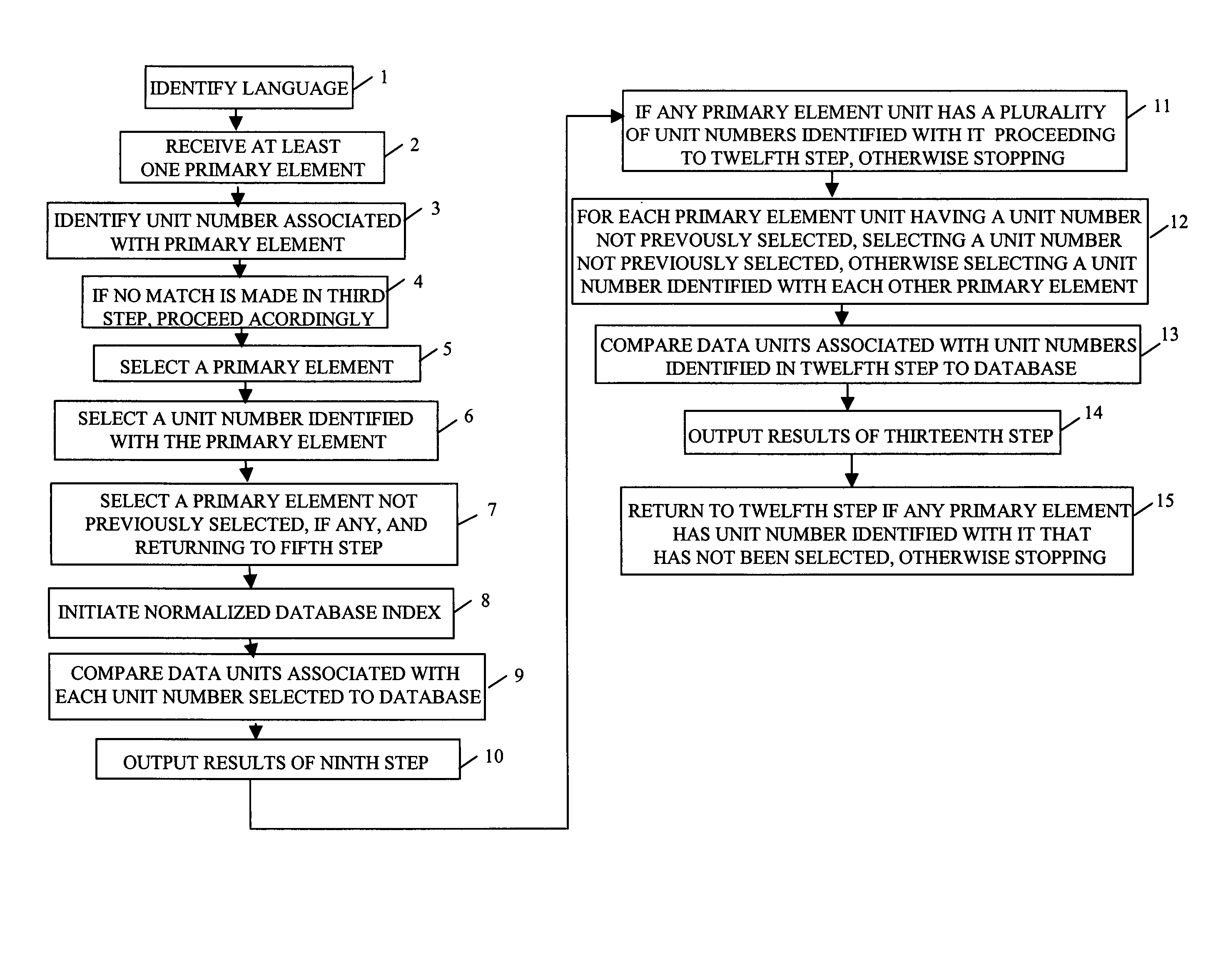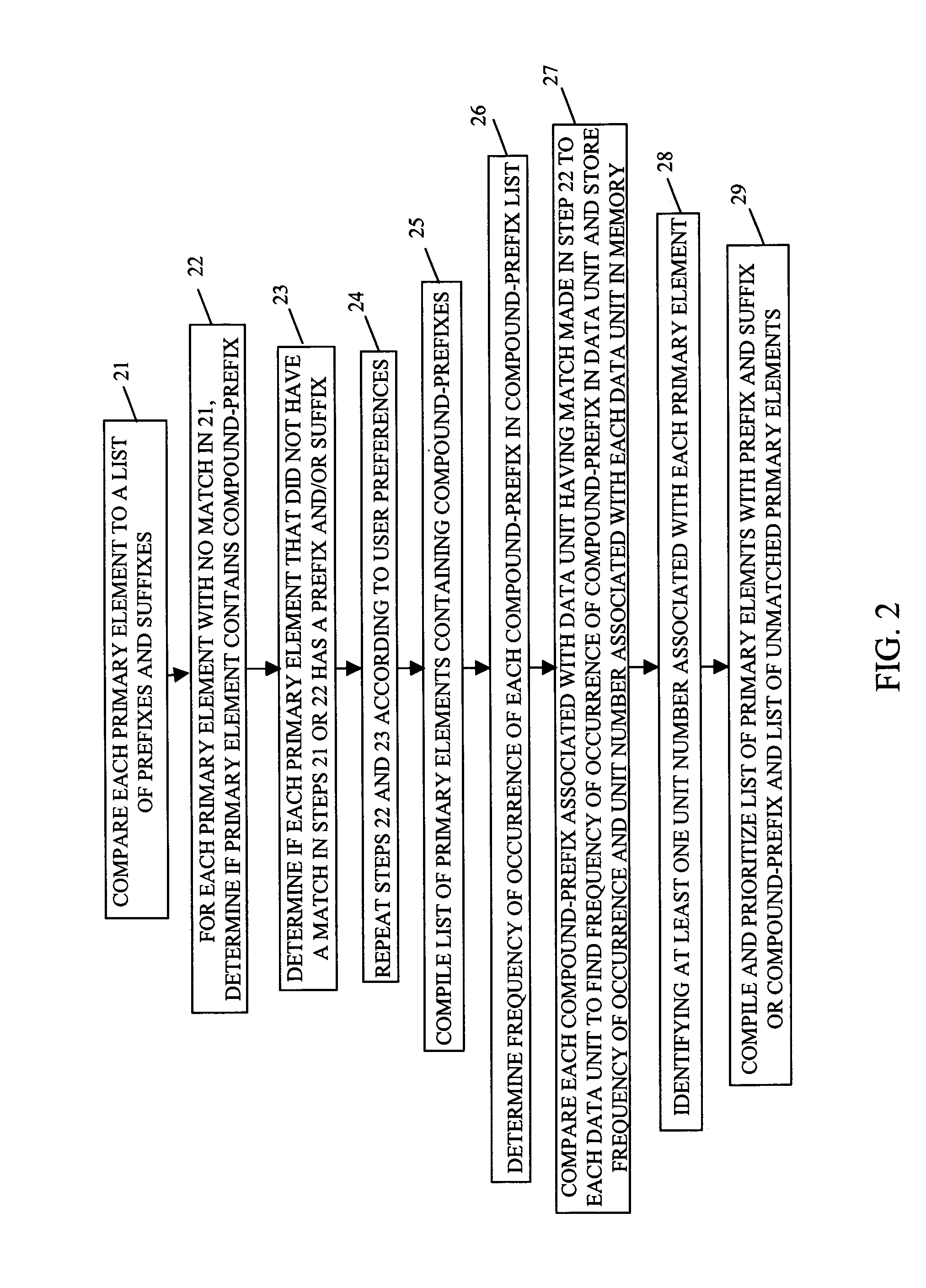Method of database searching
a database and database technology, applied in the field of natural language processing, can solve the problems of increasing the need to cross reference indexes using combined phrases, increasing the expenses of the company, and extremely difficult to achieve delicate balan
- Summary
- Abstract
- Description
- Claims
- Application Information
AI Technical Summary
Benefits of technology
Problems solved by technology
Method used
Image
Examples
Embodiment Construction
[0031]The present invention is a method of database searching. FIG. 1 is a list of the steps of the method of the present invention. The first step 1 of the method is selecting a language. The language selected should be the language of the data to be analyzed by the system. Any language can be analyzed using the method of the present invention as would be obvious to one of skill in the art, such as English, French, Albanian, Basque, Greek, Turkish, Hindi or Japanese. A string may be multi-lingual or multi-cultural.
[0032]The second step 2 of the method is receiving at least one primary element, where each primary element includes at least one sub-textual unit. An element is any distinct, independent string of letters or symbols that comprise a word. For example, an element may be an English word composed of multiple letters from the Latin alphabet, a Chinese symbol representing a word, or a Japanese word comprised of Kanji symbols. An element may also be an alphanumeric identifier, ...
PUM
 Login to View More
Login to View More Abstract
Description
Claims
Application Information
 Login to View More
Login to View More - R&D
- Intellectual Property
- Life Sciences
- Materials
- Tech Scout
- Unparalleled Data Quality
- Higher Quality Content
- 60% Fewer Hallucinations
Browse by: Latest US Patents, China's latest patents, Technical Efficacy Thesaurus, Application Domain, Technology Topic, Popular Technical Reports.
© 2025 PatSnap. All rights reserved.Legal|Privacy policy|Modern Slavery Act Transparency Statement|Sitemap|About US| Contact US: help@patsnap.com



